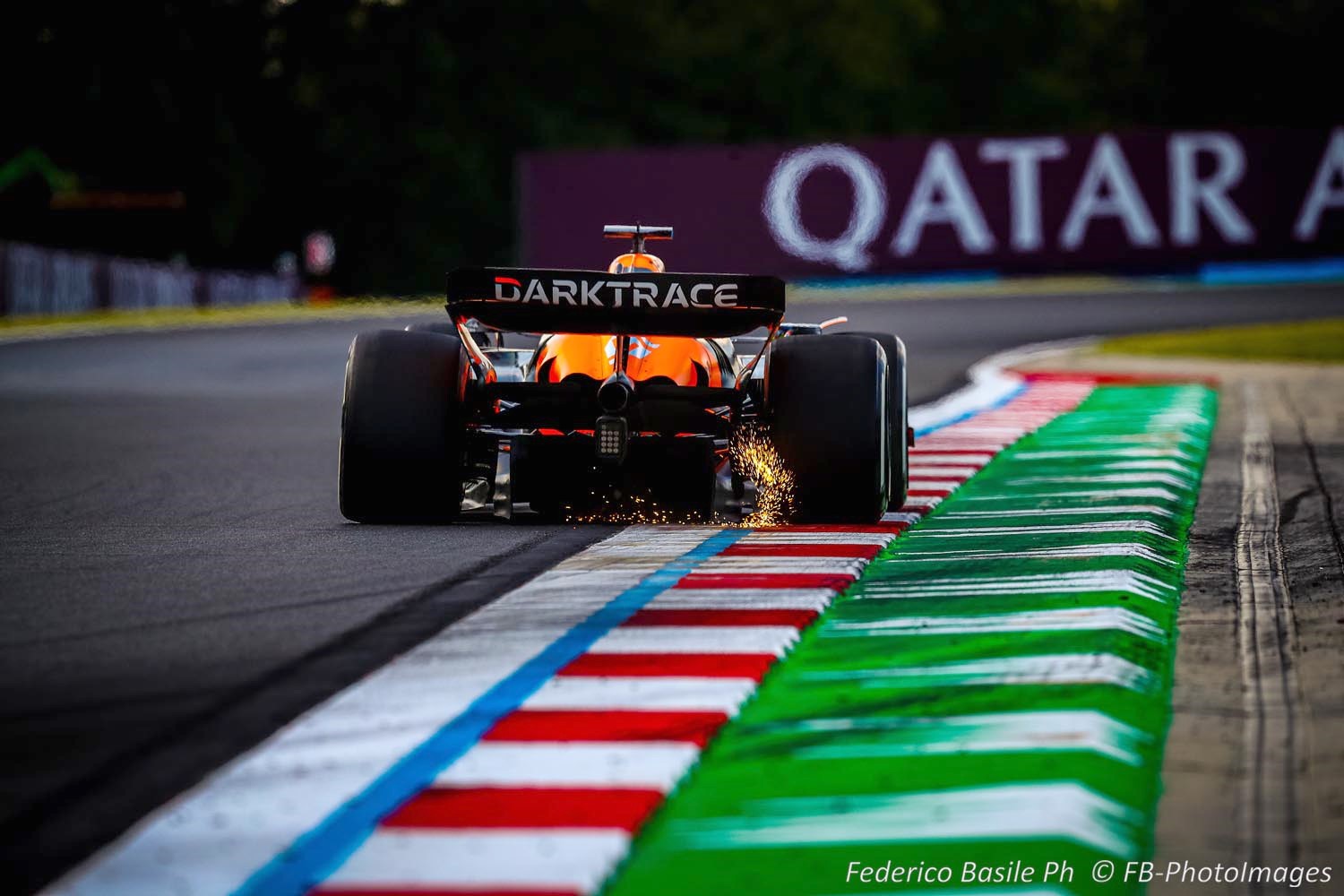F1 News: Spotlight now shines on McLaren’s ‘cheater’ rear wing (Update)
(GMM) A hot topic in the Singapore paddock is McLaren’s so-called ‘mini DRS’ rear wing that is now in the spotlight of the F1 governing body, the FIA.
Although Ferrari is among other teams also experimenting with clever wing flexibility skirting the boundaries of the regulations, Charles Leclerc couldn’t help but joke when asked about his team’s new front wing.
“I mean, it’s not a mini DRS,” he smiled, “but it’s positive.”
Leclerc insisted that McLaren’s rear wing, which opens up DRS-like gaps at the extreme ends to shed drag when at high speed whilst still passing FIA flex tests, is “controversial, to put it mildly”.
Predictably, McLaren duo Oscar Piastri and Lando Norris hailed the ingenuity of their team’s designers, with Piastri insisting: “Well, I mean, it’s legal.
“So yeah, as long as it passes all the tests.”
Red Bull driver Sergio Perez, however, believes the McLaren solution is “outside the regulations”, even though on paper it remains “a legal car”.
Teammate and championship leader Max Verstappen added: “It might be smart, might not be smart, but at the end of the day it’s up to the FIA to decide if it’s legal or not, right?”
Related Article: Fans call for McLaren’s illegal car to be disqualified
FIA scrutineers were seen carefully inspecting McLaren’s front and rear wings on Thursday ahead of the Singapore GP weekend.
Later, the Paris based federation confirmed it is “closely monitoring the bodywork flexibility” up and down pitlane, and “reserves the right to require teams to make modifications at any time during the season”.
September 17, 2024
(GMM) The legality of McLaren’s rear ‘cheater’ wing design is now coming under the spotlight in Formula 1.
As the Woking based team surged to the very front of the grid during the course of 2024, Red Bull in particular pointed at the suspicious flexibility of the papaya-colored front wing.
The FIA, however, gave the design the green light.
But now, after the Azerbaijan GP, detailed images of McLaren’s rear wing are doing the rounds on social media, and are being reproduced by publications such as Diario Sport in Spain and France’s Auto Hebdo.
🚨 Shocking, McLaren has 2 DRS gadgets.
New: an extra mini DRS that opens automaticallyAfter the flexi front wing, now they’ve a flexi rear wing. Even my dog can see that this isn’t right.
Seeing this, you might be wondering how McLaren has made such a significant jump since… pic.twitter.com/98R7lQnFrq
— Marc🏎 (@433_marc) September 15, 2024
The images show that when the 2024 McLaren is at speed, the rear wing flattens out to reveal two visible gaps at both extreme edges. The phenomenon is being called a ‘mini DRS’ by some.
It is not known how long the Baku-spec wing has been on the car, but McLaren boss Andrea Stella said at Zandvoort that the car was featuring an upgrade in that area.
McLaren Mini-DRS Effect Visualized 🧐
What do you think about it? pic.twitter.com/df0tgYp9ng
— JUST FORMULACAR (@justformulacar) September 16, 2024
“This rear wing should give us a bit more downforce, with a similar amount of drag,” he said at the time. “So it should help us move forward a bit more.”
And at Baku, Stella revealed that more car upgrades are looming soon.
“Yes, we are still working on upgrades for this season,” he confirmed. “We are currently finalizing them.”
When asked if the new parts will debut this weekend in Singapore, McLaren’s Stella smiled: “We’ll see.
“I don’t want to give away too much about what we are doing and when it will happen. But we have a plan to make the car faster.
“I often hear that we have the best car, but you don’t see that on many circuits. We had no advantage here over Ferrari and not even over Red Bull.”
🔍Comparing the difference in rear wing deflection under load for the top three teams in Azerbaijan.
McLaren seems to be the only team where the gap between the main plane and the DRS flap widens at the edges when the wing is under load.
📸: stills from @F1#F1 #AzerbaijanGP pic.twitter.com/x0kivgccXX
— MultiViewer (@f1multiviewer) September 15, 2024
It was only on the 2.2 km straights in Baku that the rear wing upgrades McLaren rolled out a few races ago were made visible: the live footage showed that the leading edge of the DRS flap raised inline with the load when the system was not activated. At high speeds (and therefore under load), it was possible to notice how this small portion of the DRS flap raised slightly, increasing the space between the main-plane and the mobile flap in that small area, creating a “mini-DRS” effect, even when the system was not activated.
